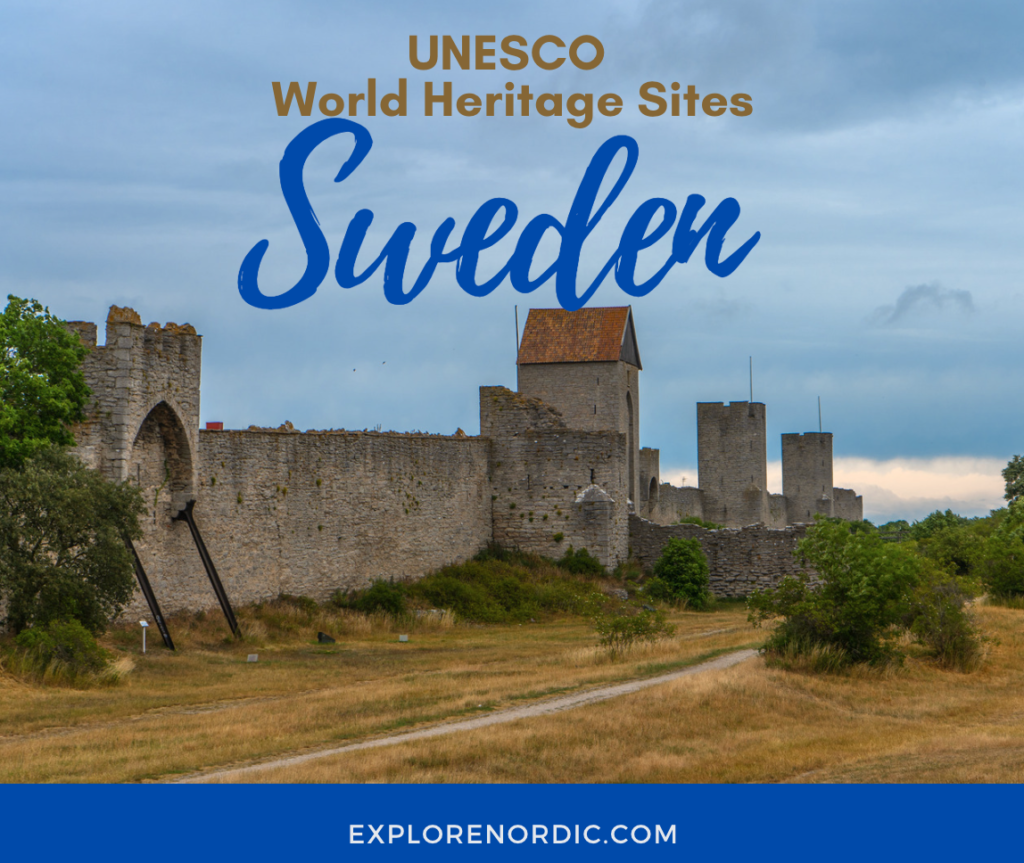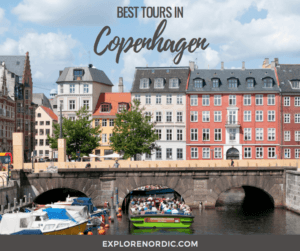Are you looking for UNESCO World Heritage Sites in Sweden? UNESCO World Heritage Sites are places around the world that are recognized by the United Nations Educational, Scientific and Cultural Organization (UNESCO) as being of special cultural or physical significance. These sites are considered to be important and valuable to all humanity and are protected under international treaties.
UNESCO World Heritage List Criteria
To be considered for inclusion on the UNESCO World Heritage List, a site must meet one or more of the following criteria:
- A unique or exceptional testimony to a cultural tradition or civilization that has disappeared, or is under threat, from development or deterioration. This could be an ancient city, historic building, or other cultural sites that provides important insights into human history.
- A masterpiece of human creative genius that demonstrates outstanding universal value. This could include artistic, scientific, or technological achievements that have had a profound impact on human history and culture.
- An outstanding example of a traditional human settlement, land use, or sea use, that represents a culture (or cultures) or human interaction with the environment. This criterion recognizes the importance of traditional ways of life. Along with the role of communities in preserving their cultural heritage.
- A unique natural phenomenon or area of exceptional natural beauty that is of significant scientific, aesthetic, or ecological importance. This could include natural landscapes, wildlife reserves, or geological formations that have played an important role in shaping the natural world.
- An outstanding example of a traditional or living cultural tradition that is still relevant today. This criterion recognizes the importance of cultural diversity and the role of communities in preserving their cultural heritage.
To be considered for inclusion on the World Heritage List, a site must also meet certain operational guidelines related to its management, conservation, and sustainability. This ensures that designated sites are properly protected and managed for the benefit of future generations.
Once a site is designated as a UNESCO World Heritage Site, it is protected and preserved by the international community. There are currently over 1,100 World Heritage Sites around the world. These include natural wonders like the Grand Canyon and cultural landmarks like the Taj Mahal.
UNESCO World Heritage Sites in Sweden
Sweden is a country with a rich cultural and natural heritage. Its UNESCO World Heritage Sites are a testament to its unique history and landscapes. From ancient Viking trading centers to modernist cemeteries, Sweden’s World Heritage Sites offer a fascinating glimpse into the country’s past and present.
We will discover all 13 + 2 UNESCO World Heritage Sites in Sweden. 3 of them are close to the capital Stockholm, we’ll dive a little deeper into.
1. Royal Domain of Drottningholm (1991)

The Royal Domain of Drottningholm is a cultural World Heritage Site located near Stockholm. It is a well-preserved example of a Swedish royal palace and estate and includes a large palace, several gardens, and other buildings. The site has been the residence of the Swedish royal family since the 17th century and is an important example of the role of the monarchy in Swedish history.
History
The Royal Domain of Drottningholm was originally built in the late 16th century as a summer residence for Queen Dowager Katarina Stenbock. Over the years the estate was expanded and renovated by a series of royal owners, including King Johan III and his wife Queen Katarina Jagellonica. However, it was Queen Hedvig Eleonora, who became the owner of the property in the late 17th century. She transformed it into the magnificent palace that it is today.
Queen Hedvig Eleonora commissioned the construction of a grand palace in the Baroque style, which was completed in 1690. The palace was designed by the architect Nicodemus Tessin the Younger. It was inspired by the Palace of Versailles in France. The estate also includes several other buildings and structures, such as the Chinese Pavilion and the Drottningholm Court Theatre. Which were added in the 18th century.
Significance of this UNESCO World Heritage Site in Sweden
The Royal Domain of Drottningholm is an important cultural landmark for several reasons. Firstly, it is an excellent example of 17th and 18th-century palace architecture and design. The palace and its gardens were designed to be a harmonious whole, with each element complementing and enhancing the others. The palace is decorated with sumptuous Baroque furnishings and artworks, which reflect the opulence and grandeur of the time.
Secondly, the site is significant for its association with the Swedish royal family. The palace has served as the primary residence of the Swedish monarchs since the 17th century. It continues to be used for official events and ceremonies. The estate is also an important cultural center, with regular performances and events taking place at the Drottningholm Court Theatre.
Finally, the Royal Domain of Drottningholm is significant for its well-preserved and beautifully landscaped gardens. The gardens were designed in the Baroque style and feature symmetrical patterns, fountains, and topiary. The gardens are a popular tourist attraction in their own right. Visitors can take guided tours or simply enjoy a stroll through the grounds.
Visiting the Royal Domain of Drottningholm
The Royal Domain of Drottningholm is open to visitors year-round, and guided tours are available in several languages. Visitors can explore the palace, gardens, and other buildings, including the Chinese Pavilion and the Drottningholm Court Theatre. The estate is located about 10 kilometers outside of Stockholm. It is easily accessible by public transportation or car.
The Royal Domain of Drottningholm is a remarkable cultural landmark that offers a fascinating glimpse into Swedish history and culture. The palace, gardens, and other structures are beautifully preserved and provide an excellent example of Baroque architecture and design. Visitors to the site can also experience the legacy of the Swedish royal family and the importance of the estate to the country’s cultural heritage.
2. Skogskyrkogården (1994)
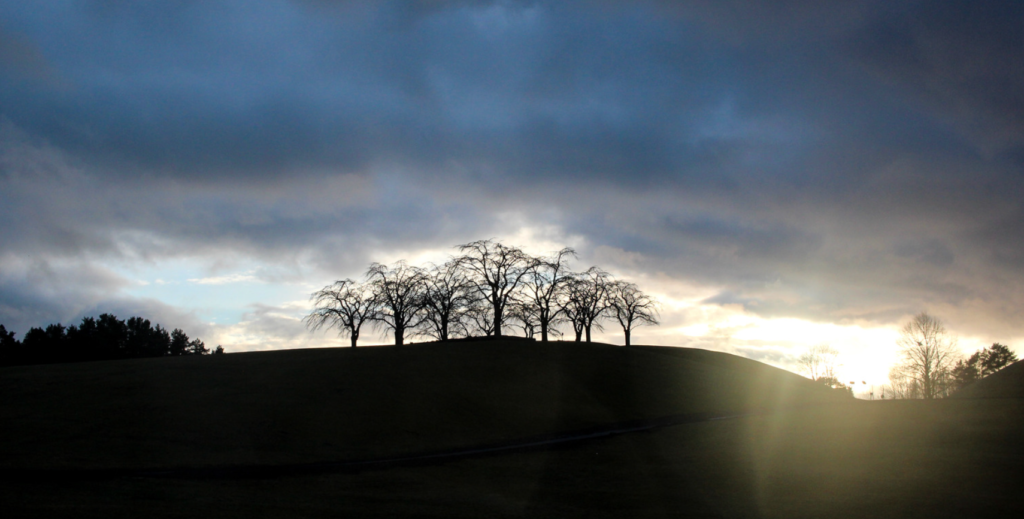
Skogskyrkogården, or The Woodland Cemetery, is a UNESCO World Heritage Site located in the southern suburbs of Stockholm. Designed by two architects, Gunnar Asplund, and Sigurd Lewerentz, in the early 20th century. Skogskyrkogården is a unique and highly influential example of modernist cemetery architecture.
History
Skogskyrkogården was built in the 1910s and 1920s in response to the need for additional cemetery space in Stockholm. The site was chosen due to its rural location and beautiful natural surroundings. It provided a peaceful and serene atmosphere for mourners. The architects, Gunnar Asplund and Sigurd Lewerentz were both rising stars in the field of modernist architecture and were chosen to design the new cemetery.
Design
The design of Skogskyrkogården is based on a series of concentric circles. The central area features a chapel and several ceremonial halls. The buildings were designed in a simplified, modernist style that emphasized clean lines, natural materials, and a harmonious relationship with the landscape. The cemetery grounds were designed as a naturalistic park, with winding paths, wooded areas, and open meadows.
One of the most notable features of Skogskyrkogården is the use of light and shadow to create a sense of tranquility and contemplation. The architects used trees, water features, and carefully placed buildings to control the flow of light throughout the site. This creates a sense of calm and serenity for visitors.
Significance
Skogskyrkogården is a significant example of modernist cemetery architecture. Its design has influenced numerous other cemeteries around the world. The use of natural materials, simplified forms, and the integration of landscape and architecture were all innovative ideas at the time. It helped to redefine the role of cemeteries in society.
In addition to its architectural significance, Skogskyrkogården is also a cultural landmark in Sweden. The site is an important place of mourning and remembrance for families and loved ones. It has become a popular destination for tourists interested in the history of modernist architecture.
Visiting Skogskyrkogården
Skogskyrkogården is open to visitors year-round, and admission is free. Visitors can take guided tours of the cemetery, or explore on their own using a self-guided map. The cemetery is located about 15 kilometers south of Stockholm city center and can be reached by public transportation or car.
Skogskyrkogården is a remarkable cultural and architectural landmark that has played an important role in the history of modernist architecture. Its unique design, naturalistic landscape, and emphasis on light and shadow create a sense of tranquility and contemplation. It makes it an ideal place for mourning and remembrance. Visitors to the site can experience the legacy of two influential architects and the impact of their design on the world of architecture and design.
3. Birka and Hovgården (1993)

Located near Stockholm, Birka and Hovgården are archaeological remains of two Viking Age trading centers that were active from the 8th to the 10th century. Birka was an important trading hub in the Baltic Sea region. The site includes a large number of well-preserved Viking Age buildings, graves, and artifacts. Hovgården was a royal estate and burial ground and includes several large burial mounds and a royal hall.
Birka and Hovgården are located on the island of Björkö in Lake Mälaren, near Stockholm. They are among the most important and well-preserved Viking Age sites in the world and were designated as a UNESCO World Heritage Site in 1993.
History of Birka and Hovgården
Birka and Hovgården were both major Viking Age settlements, with Birka being the larger and more important of the two. Birka was founded in the late 8th century and quickly became a major trading center, connecting Scandinavia with the rest of Europe. The settlement was located on a small island in Lake Mälaren and was protected by a fortification wall. It was home to several thousand people and was the center of trade, politics, and culture in the region.
Hovgården, located nearby on the mainland, was the site of a royal palace and burial ground. It was the center of political power in the region during the Viking Age and was the site of several important events in Swedish history.
Archaeology
Birka and Hovgården were rediscovered in the 19th century and excavations began in the early 20th century. Since then, thousands of artifacts have been uncovered, including jewelry, weapons, tools, and household items. The sites are considered to be among the most important archaeological sites in Scandinavia. They have provided invaluable insights into Viking Age culture and society.
Significance
Birka and Hovgården are significant not only for their archaeological value but also for their historical and cultural significance. The sites provide important evidence of the Viking Age and the role of Scandinavia in European trade and politics. They also shed light on the daily lives of the people who lived there. How they interacted with each other and with the rest of the world.
Visiting Birka and Hovgården
Birka and Hovgården are open to visitors year-round and can be reached by boat from Stockholm. Visitors can explore the archaeological sites and see the excavated artifacts, as well as learn about the history and culture of the Viking Age. There are also several museums and visitor centers in the area that provide additional information and context.
Birka and Hovgården are important archaeological sites that provide invaluable insights into the Viking Age and the history of Scandinavia. Their designation as a UNESCO World Heritage Site recognizes their cultural and historical significance and ensures that they will be preserved and protected for future generations. Visitors to the sites can experience the legacy of one of the most fascinating periods in European history. Also, gain a deeper understanding of the people and cultures that shaped the world we live in today.
4. Agricultural Landscape of Southern Öland (2000)
The Agricultural Landscape of Southern Öland is a cultural World Heritage Site that was inscribed in 2000. It consists of a large area of farmland on the island of Öland. The area has been shaped by human activities for over 2,000 years. The landscape includes a variety of different agricultural practices, including grazing, haymaking, and cultivation. It is an important example of sustainable land use.
5. Church Town of Gammelstad, Luleå (1996)
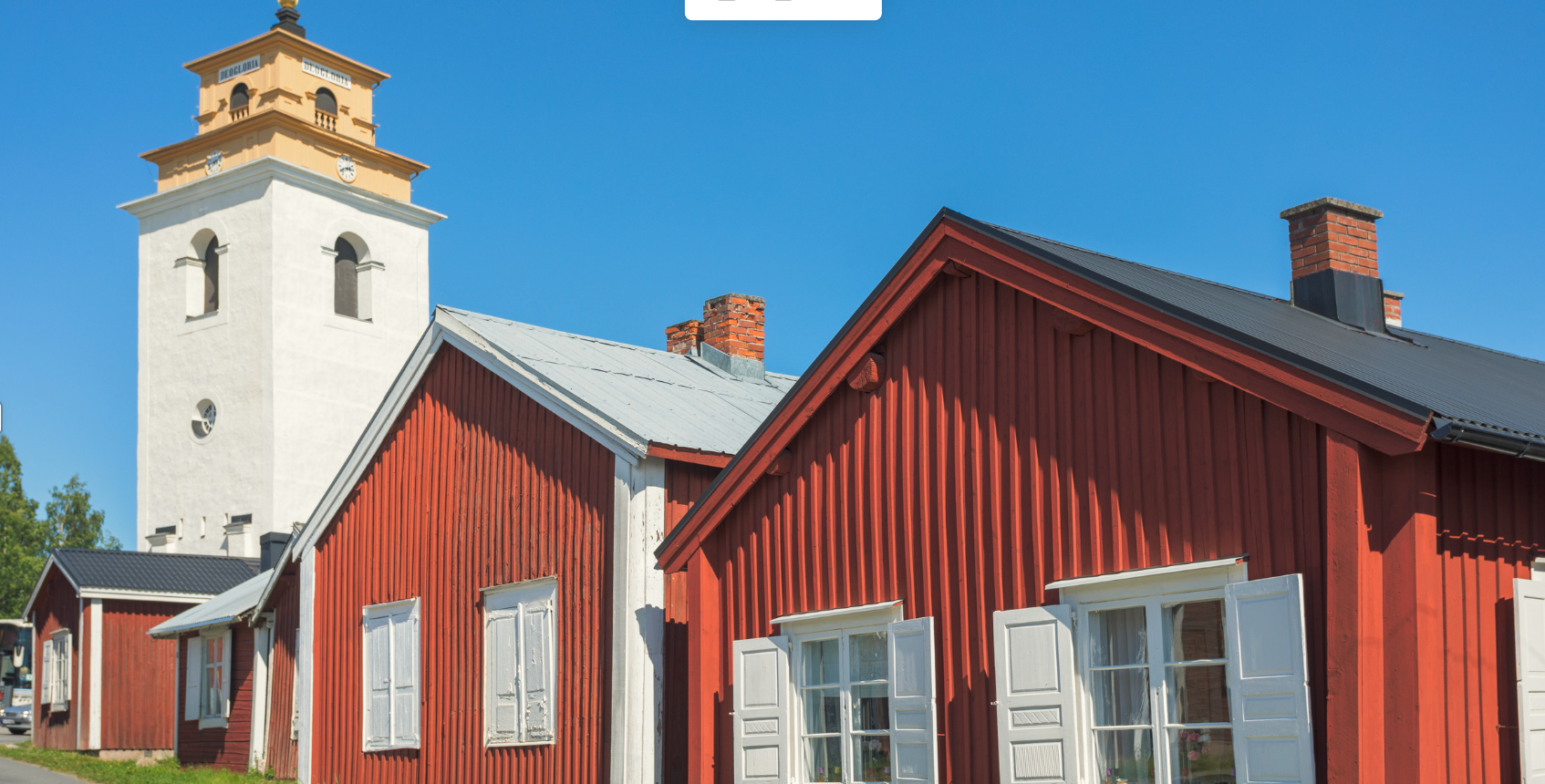
The Church Town of Gammelstad is a cultural World Heritage Site located in the city of Luleå. It is an exceptionally well-preserved example of a traditional Swedish church town, consisting of over 400 wooden houses clustered around a large stone church. The houses were built by farmers and fishermen who traveled long distances to attend church services. The site is an important example of the role of religion in Swedish rural life.
6. Decorated Farmhouses of Hälsingland (2012)
The Decorated Farmhouses of Hälsingland are a cultural World Heritage Site that was inscribed in 2012. They are a group of six large wooden farmhouses located in the Hälsingland region of central Sweden. Each is decorated with elaborately painted interiors. The farmhouses are an important example of traditional Swedish rural architecture and decorative arts.
7. Engelsberg Ironworks (1993)
Engelsberg Ironworks is a cultural World Heritage Site located in central Sweden. It is a well-preserved example of a 17th- and 18th-century ironworks complex and played an important role in Sweden’s industrial development. The site includes a blast furnace, a forge, a hammer mill, and other buildings that illustrate the process of iron production in the early modern period.
8. Grimeton Radio Station, Varberg (2004)
The Grimeton Radio Station is a cultural World Heritage Site located in Varberg, on the west coast of Sweden. It is a large early 20th-century radio station that was used for long-distance communication across the Atlantic Ocean. The site includes a large radio transmitter and several other buildings. It’s an important example of early 20th-century communication technology.
9. Hanseatic Town of Visby (1995)
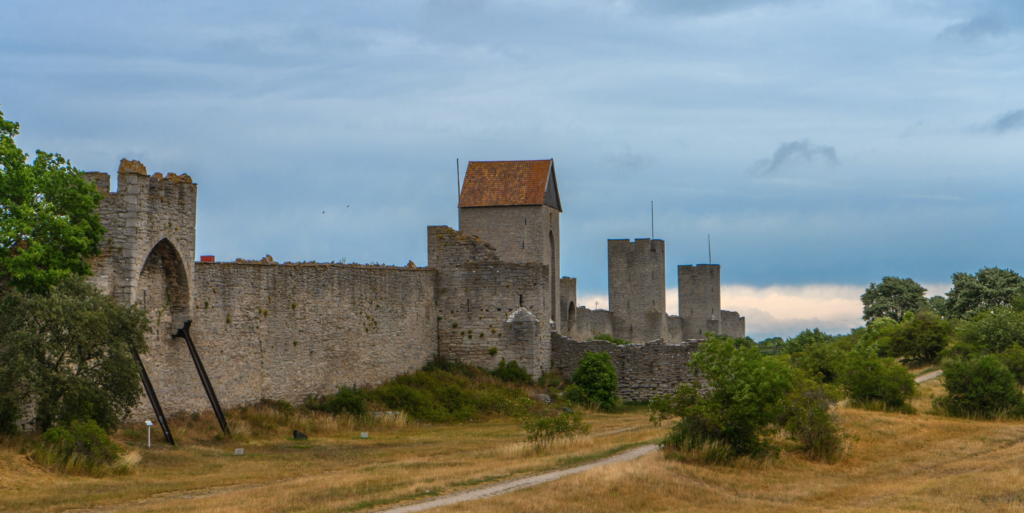
The Hanseatic Town of Visby is a cultural World Heritage Site located on the island of Gotland in the Baltic Sea. It is a well-preserved example of a medieval European trading town and includes a large number of well-preserved medieval buildings, including churches, merchants’ houses, and fortifications. The site is an important example of the role of trade and commerce in medieval European history.
10. Mining Area of the Great Copper Mountain in Falun (2001)
The Mining Area of the Great Copper Mountain in Falun is a cultural World Heritage Site located in central Sweden. It is a well-preserved example of a 17th-century copper mine and played an important role in Sweden’s economy and history. The site includes a large open pit mine, several buildings, and a museum that showcases the history of the mine and the people who worked there.
11. Naval Port of Karlskrona (1998)
The Naval Port of Karlskrona is a cultural World Heritage Site located on the south coast of Sweden. It was founded in the late 17th century as a strategic naval base. It includes several well-preserved buildings and fortifications from the period. The site is an important example of the development of naval architecture and technology in the early modern period.
12. Rock Carvings in Tanum (1994)
The Rock Carvings in Tanum are a cultural World Heritage Site located on the west coast of Sweden. They are a large collection of prehistoric petroglyphs that were created by the Bronze Age people who lived in the area between 1700 and 500 BCE. The carvings depict a variety of subjects, including boats, animals, and human figures. They are an important example of prehistoric art and culture.
13. Struve Geodetic Arc (2005)
The Struve Geodetic Arc is a cultural World Heritage Site that stretches across ten countries, including Sweden. It is a series of 34 surveying points that were established in the 19th century to measure the shape and size of the Earth. The surveying points were used to calculate the first accurate measurement of the Earth’s shape. The site is an important example of the development of modern scientific techniques.
Sweden also has one natural and one mixed World Heritage Site:
High Coast / Kvarken Archipelago (2000 / 2006)
The High Coast / Kvarken Archipelago is a natural and cultural World Heritage Site that spans Sweden and Finland. It includes a large area of coastal landscape that was formed by the retreat of glaciers at the end of the last Ice Age. The site is an important example of the interaction between geological processes, human settlement and land use.
Laponian Area (1996)
The Laponian Area is a mixed World Heritage Site located in northern Sweden. It includes a large area of wilderness that is home to several indigenous Sami communities. The site is an important example of the traditional Sami way of life and the importance of reindeer husbandry to their culture and economy.
In conclusion, Sweden’s UNESCO World Heritage Sites offer a fascinating glimpse into the country’s cultural and natural history. From ancient Viking trading centers to modernist cemeteries, these sites provide a unique perspective on Swedish life and society over the centuries.
These are the UNESCO World Heritage Sites in Sweden. Have you been, or maybe you are planning on going? Let us know in the comment section below,


